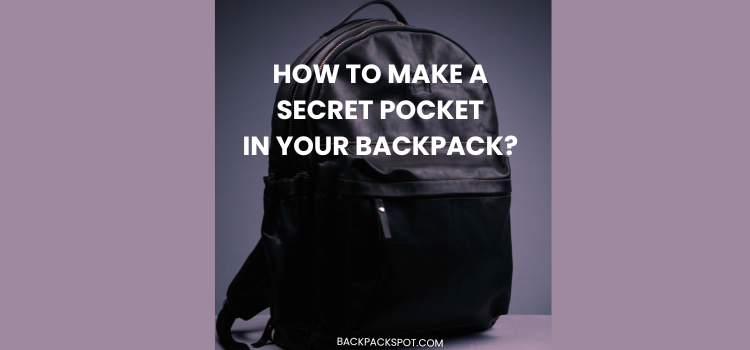What Muscles Does Carrying A Heavy Backpack Work? (Detailed Guide)
Carrying a heavy backpack is something many of us do on a daily basis, whether we’re students, hikers, or commuters. But have you ever wondered what muscles does carrying a heavy backpack works? Wonder no more! I have the answer for you!
The trapezius, rhomboid, deltoid, biceps, triceps, and abdominal muscles are typically worked when carrying a heavy backpack. Additionally, the hips and lower back are also engaged for balance.
In this article, we’ll dive deep into the anatomy of backpack carrying and explore the muscles that get a workout. So, strap in, and let’s discover how your backpack shapes your body!
Basics of Backpack Carrying
Backpacks should be carried using both shoulder straps and adjusted to fit snugly against the back. The shoulder straps should be adjusted so that the top of the backpack sits just above the shoulder blades and the pack is snug but not too tight. The backpack should also be worn close to the body, not hanging off the back.
What Muscles Does Carrying a Heavy Backpack Work?
Carrying a heavy backpack involves a combination of muscle groups that work together to support and stabilize your body. Here are the main muscles that come into play:

Upper Body Muscles
The act of carrying a heavy backpack works wonders for your upper-body muscles. The upper body muscle groups it activates:
1. Trapezius Muscles
One of the primary muscles that bears the brunt of backpack weight is the trapezius muscle.
Upper Trapezius
These muscles help lift the backpack and support the weight on your shoulders.
Middle Trapezius
They assist in maintaining proper posture and shoulder stability.
Lower Trapezius
These muscles engage when you retract your shoulder blades, providing additional stability.
2. Deltoid Muscles
The deltoids are responsible for lifting and controlling the backpack’s weight when you raise your arms to put it on or take it off.
3. Rhomboid Muscles
The rhomboids work to retract the scapulae (shoulder blades), aiding in maintaining a straight posture while carrying a backpack.
4. Biceps and Triceps
Although not the primary muscles involved, your biceps and triceps assist in controlling your arms’ movements while carrying a backpack. They are responsible for bending and straightening your elbow joints.
Core Muscles
Lugging around that weighty load engages your core muscles, including
1. Rectus Abdominis
Your abs work to support your spine and maintain posture while carrying a heavy load.
2. Obliques
The oblique muscles, both internal and external, engage to help you twist and turn while wearing a backpack.
Lower Body Muscles
Carrying a backpack might seem like an upper-body-dominant activity, but your lower body is far from being left out. It is in too! Some of the lower muscle groups that activate include:
1. Gluteal Muscles
While not as obvious as the muscles in your upper body, the gluteal muscles are still involved when carrying a backpack. The glutes help you maintain an upright posture and stabilize your pelvis while carrying the load.
2. Erector Spinae Muscles
Your erector spinae muscles run along your spine’s length and help maintain an upright posture when carrying a heavy backpack. They are engaged to counteract the forward pull of the backpack and prevent excessive leaning.
3. Quadriceps and Hamstrings
Your leg muscles, particularly the quadriceps (front thigh muscles) and hamstrings (back thigh muscles), are used when walking or climbing with a heavy backpack. They aid in propelling you forward and maintaining balance.
4. Calf Muscles
The calf muscles, including the gastrocnemius and soleus, are engaged when you’re walking or hiking with a heavy backpack. They help control your stride and absorb shock as your feet hit the ground.
Consider reading Is Carrying A Heavy Backpack Good Exercise? (In-Depth Explanation)
Benefits of Carrying a Heavy Backpack
Now that we know which muscles are involved, let’s explore the benefits of carrying a heavy backpack.
Strengthens Muscles
Carrying a heavy backpack is a functional way to strengthen your back, shoulders, and core muscles.
Improves Posture
Maintaining proper posture is crucial when carrying a heavy load, which can lead to improved posture in your daily life.
Enhances Balance and Stability
Balancing a heavy backpack forces you to engage various muscle groups, improving your overall balance and stability.
Burns Calories
Carrying extra weight burns more calories than walking without a backpack, making it an effective, low-impact workout.
If you want to learn more about it in detail, then you need to go through What Are Benefits Of Using Backpack? (Top 5 Benefits)
Potential Risks and Injury Prevention
Carrying heavy backpacks can pose a risk of overuse injuries.
Overuse Injuries
Here are some potential overuse injuries associated with backpacks:

Back and Neck Pain
The weight of a heavy backpack can strain the muscles and ligaments in the back and neck, leading to chronic pain and discomfort.
Shoulder Injuries
Carrying a heavy backpack on one shoulder can cause uneven stress, potentially leading to shoulder injuries like tendinitis or bursitis.
Postural Problems
Over time, the habit of carrying a heavy backpack improperly can lead to poor posture and spinal misalignment.
Injury Prevention
To prevent overuse injuries associated with backpacks, consider the following tips:
Proper Backpack Selection
Choose a backpack with wide, padded shoulder straps, a padded back panel, and a waist or chest strap. By using these features, weight will be distributed evenly and strain will be reduced.
Limit Backpack Weight
Keep the backpack’s weight within recommended guidelines (usually around 10-15% of your body weight). Remove unnecessary items to lighten the load.
Use Both Shoulder Straps
Always use both shoulder straps to distribute the weight evenly across your shoulders and back.
Also, read Are Sling Backpacks Bad For Your Back? (Here’s What You Need To Know)
Tips for Engaging Muscles Safely and Effectively
The following three tips will help you engage your muscles safely and effectively:
- Distribute the weight evenly to prevent overloading one side of your body.
- Ensure that your backpack straps are adjusted to fit your body comfortably.
- Backpacks with waist belts help distribute the weight more evenly and reduce strain on your shoulders and back.
Here is a complete post about 10 Tips How To Find a Quality Backpack. (Ultimate Guide)
Conclusion
I hope this article gives the answer to your question, “What Muscles Does Carrying A Heavy Backpack Work?” and provides you with tips and tricks on how to carry a heavy backpack safely and effectively. So, the next time you embark on a backpacking journey, appreciate the work your muscles are doing to carry the load and ensure you’re taking steps to care for them properly!
FAQs
Q: Can carrying a heavy backpack lead to muscle imbalances?
A: Yes, regularly carrying an unbalanced or excessively heavy backpack can lead to muscle imbalances and postural issues.
Q: Can carrying a heavy backpack replace regular exercise?
A: Carrying a heavy backpack should not replace regular exercise. While it provides some benefits, it’s not a substitute for a well-rounded fitness routine that includes cardiovascular, strength, and flexibility exercises.
Q: How can I strengthen the muscles involved in carrying a backpack?
A: Incorporate strength training exercises into your fitness routine that target the shoulders, back, core, and legs. Consult a fitness professional for personalized guidance on strengthening these muscles.
References
https://backpackbuff.com/does-carrying-a-heavy-backpack-build-muscle/
https://backpacks.global/does-carrying-a-heavy-backpack-build-muscle/






